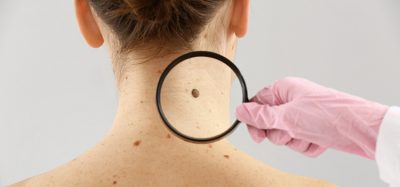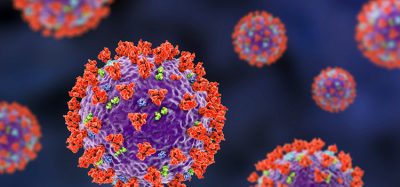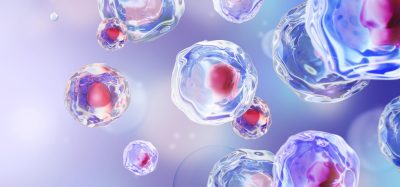Lipid droplets may prevent kidney damage from high-fat diets
Posted: 17 May 2021 | Victoria Rees (Drug Target Review) | No comments yet
Researchers have shown in fruit flies that lipid droplets could prevent the kidney damage that leads to chronic kidney disease.
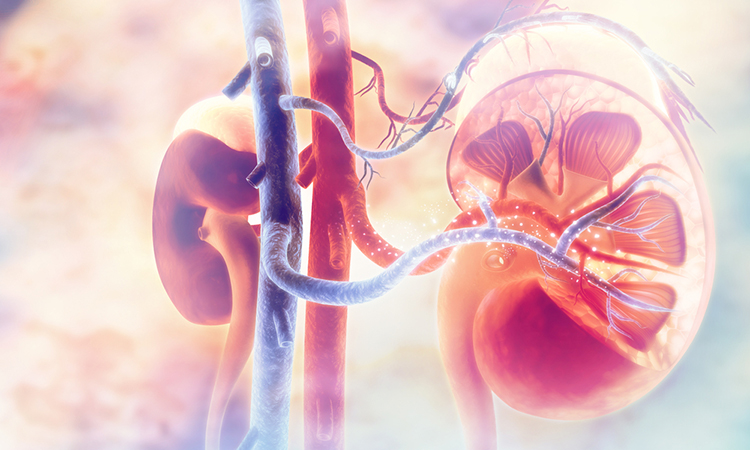

Researchers at the Francis Crick Institute, UK, have revealed how lipid droplets may help to prevent a high-fat diet causing kidney damage. According to the team, the work in fruit flies opens up a new research avenue for developing better treatments for chronic kidney disease.
Eating foods high in fats can cause inflammation and metabolic stress in the kidneys, leading to chronic disease, which in severe cases requires dialysis or a transplant.
Using electron microscopy, the researchers utilised the genetic methods available in the fruit fly (Drosophila) to show that lipid droplets protect the renal system against damage from excess dietary fats.
When fed a high-fat diet, lipid droplets accumulate inside nephrocytes, the flies’ equivalent of human kidney cells called podocytes. Here, the droplets act as a ‘safe haven’ for storing excess fats away from the rest of the cell. An enzyme called ATGL sits on the surface of lipid droplets and helps to dispose of the stored fats in a safe way. ATGL does this by feeding the fats in a digestible form to nearby mitochondria, where they can be broken down into less toxic molecules.
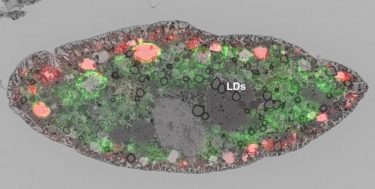

A renal cell (nephrocyte) containing internal globular structures called lipid droplets (LDs) in grey and endosomes, marked in red and green [credit: A Lubojemska, A Yoshimura, L Collinson and AP Gould].
Lipid droplets are essential for the protective process as when the scientists used genetic methods to prevent their formation, the fats left free inside the nephrocytes caused substantial damage and impaired kidney function.
Alex Gould, lead researcher of the study, said: “It has been known for many years that lipid droplets pop up in a wide range of diseases, all the way from diabetes to brain cancer. What has been far less clear is whether they are making things better or worse. It is exciting to find that lipid droplets are an essential part of the kidney’s fight back against fat overload. These fascinating structures are turning out to be so much more than tiny balls of fat and we now want to find out whether their protective role in the kidney also applies to other disease contexts.”
The scientists also found that boosting the expression of the ATGL enzyme in fruit flies was able to repair most of the damage caused by a high-fat diet, restoring normal function to the kidney cells.
Ola Lubojemska, who carried out much of this work, explained: “These findings are at an early stage but open up a new direction for clinical research into chronic kidney disease. It may, for example, be possible to develop a drug that boosts the ATGL enzyme in renal patients. This would allow excess dietary fats to be more efficiently detoxified by kidney cells, thus improving kidney function.”
The study was published in PLoS Biology.
Related topics
Enzymes, Lipidomics, Lipids, Microscopy, Molecular Targets
Related conditions
Chronic kidney disease
Related organisations
The Francis Crick Institute
Related people
Alex Gould, Ola Lubojemska



